For a game about daredevil stunts and high-flying acrobatics, Mirror’s Edge Catalyst plays it remarkably safe.
Catalyst is the long-awaited follow-up to development studio EA DICE’s groundbreaking 2008 game Mirror’s Edge. Maybe “long-awaited” is the wrong way to describe it: Most people who liked the first game, myself included, figured a proper sequel would simply never happen.
Mirror’s Edge was unusual when it came out and still seems unusual now. It was a brand-new first-person game in an era (and from a company) defined by careful sequels. It was a game with blue skies and bright white obstacle courses in a decade drenched in dark, grey-brown games. It starred a stoic woman instead of another scowling guy and emphasised traversal and escape rather than confrontation and max carnage.
It was an uneven mess, too, but there was so much potential in that stark, striking setting and in those uncompromising first-person parkour mechanics. Mirror’s Edge earned a small but loyal fanbase, but for years the series seemed hopelessly consigned to the “almost, but not quite” appendix of video game history.
Catalyst arrives eight years (!!) later, with the opportunity to more thoroughly achieve the potential established by its predecessor. It has been developed for a new generation of console gaming hardware and is, most notably, an open-world game when its predecessor was resolutely linear. In ways that likely matter most to those adherents of DICE’s flawed first attempt, Catalyst meets and even exceeds its forbearer. Yet in doing so, it winds up feeling oddly de-clawed, as if its creators have focus-tested their striking original idea into a more objectively appealing but ultimately milquetoast second draft.

Catalyst serves as a prequel reboot to the 2008 game. Players step once more into the padded parkour slippers of Faith, a hotheaded young woman who works as an off-the-grid courier in the corporate-controlled utopian megacity of Glass. You will be shocked to read this, but something is rotten beneath the city’s glossy exterior, and Faith just may hold the key to blowing this thing wide open. If that sort of dystopian cyber-cliché sounds like your cup of dystopian cyber-tea, well, you’re in luck.
At no point does Catalyst‘s narrative stray from its megacorp-approved checklist of megacity megatropes. You may have guessed that, as a child, Faith lost her family in a violent incident that motivated her to rebel against the system. Surely you will do a spit-take upon learning that her allies include a socially awkward hacker teen, a weary father-figure, a cocky young recruit with a lot to learn, an inscrutable Asian organised crime boss and a dangerous loose-cannon “ends justify the means” rebel leader. Your amazement will deepen upon learning that Faith is up against a megalomaniacal corporate bigwig who believes in sacrificing personal liberty in the name of the greater good. He travels with a mysterious, deadly henchwoman. There’s a mission called “enemy of my enemy”. You get the idea.
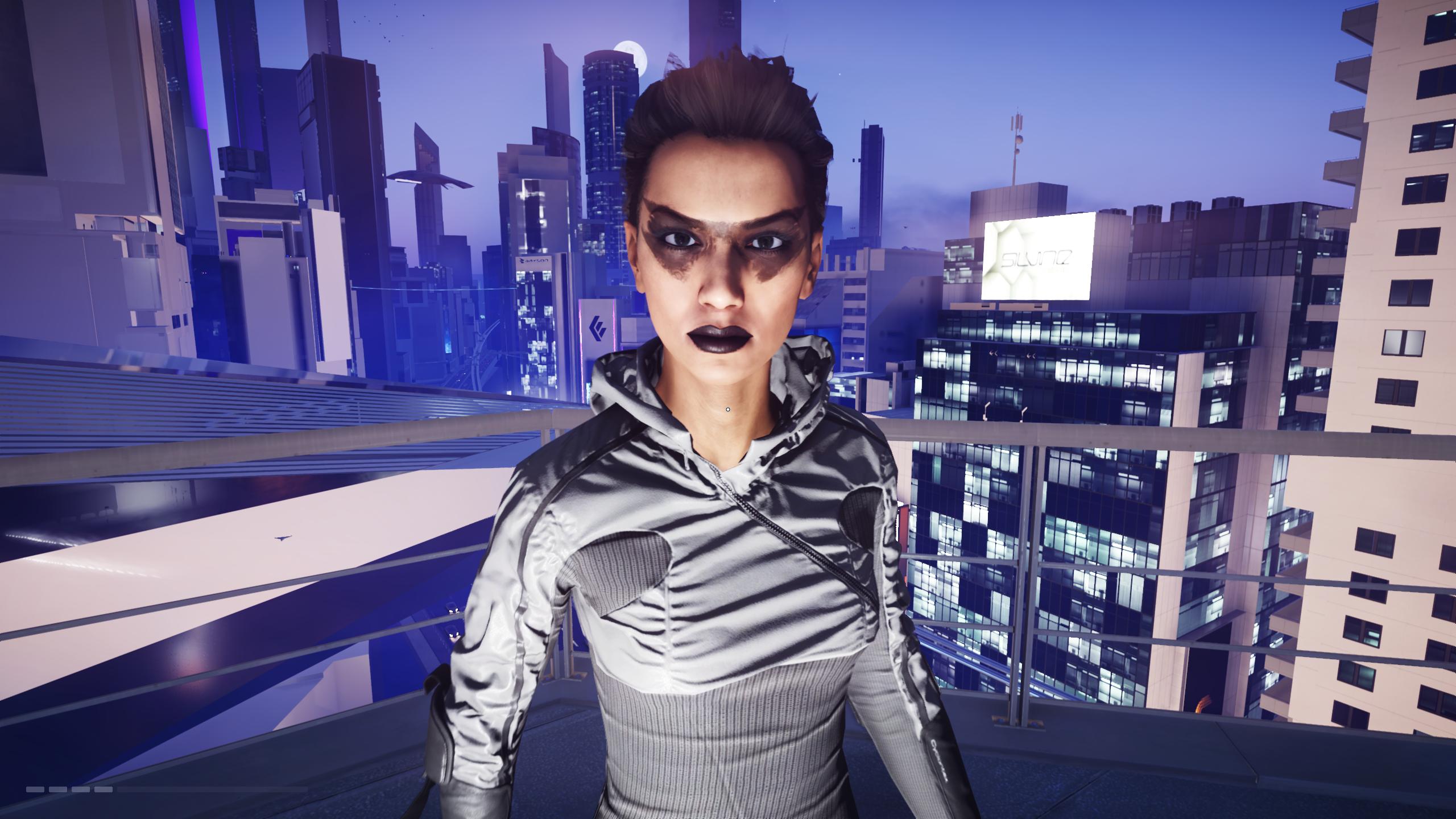
The characters are dull and largely unlikeable, and most of them seem pissed off. (I guess I would be too, if I had to live in Glass.) I appreciate that Catalyst bucks convention by making most of the story’s major players women, but it’s a shame that the characters themselves are such a drag. Faith is still a cool-looking, snappily dressed future-ninja, but mostly mumbles her way through her own story. Her most likeable ally, a young tech savant named Plastic, is only charming 50 per cent of the time and only in comparison with her fellow cast members. The rest of the cast is made up of gruff scowlers. One particularly shitheaded questgiver kept badgering me over the radio until my partner told me to “just ignore her”. Never a good sign when even the NPCs can’t stand one another.
Everything in Glass is referred to by some sort of doofy proper name: “DataTap”, “KrugerSec”, “HiCaste”, “OmniStat”, “GridNode”, “BeatLink” or, my favourite, “FoodDome”. The intent was likely to illustrate the branded vapidity of Glass’ corporate overlords, but it goes past that and winds up making every character who speaks these terms aloud — mostly sympathetic rebel-types — seem just as dorky and vapid as whoever coined them. Welcome to your Dystopian Future-City™, we’re your designated Scrappy Underground Resistance™!
You know what, I’m not going to get further sidetracked talking about the bad story. The story is bad, OK? Mirror’s Edge had a bad story too, and I like that game a lot. Catalyst is first and foremost concerned with taking the Trinity vs Agent Smith chase from the opening of The Matrix and spinning it out into a full video game. For the most part, it does that well.
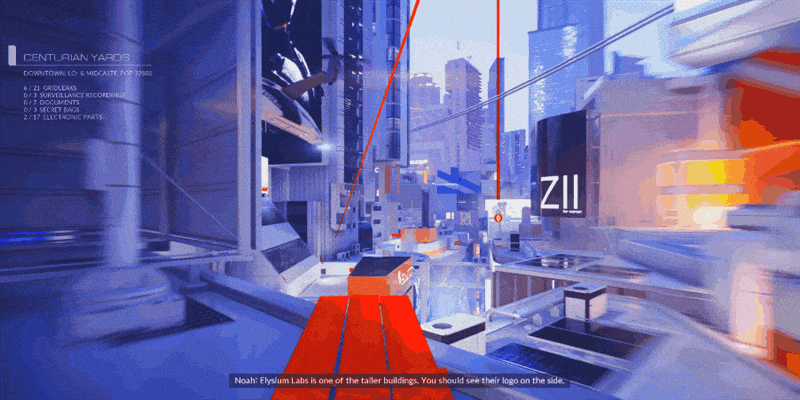
Most every mission tasks Faith with getting from point A to point B, usually as quickly as possible. Faith’s stamina and parkour abilities border on the superhuman, meaning she can swing, leap and slide across the rooftops of Glass without a single break or bruise. Everything in Catalyst is intended to help players attain and maintain momentum.
A lot of work has gone into making it feel as though you’re seeing the world through Faith’s eyes. Her arms and legs will swing into and out of the frame as her head lolls forward and backward. She hurls herself forward and tucks into a roll before pat-pat-patting along a wall and whoof-ing into a large chunk of industrial piping. Special shout-out to DICE’s sound designers, who have perfectly captured the slap-slap-slap of Faith’s running shoes and the scrape-slide of nylon against cement as she slips below a low-hanging set of pipes.
Faith’s most valuable tool is an advanced contact lens she wears that gives her “Runner Vision”, an augmented-reality view that highlights objects along the path to her next waypoint. If you choose, you can also have runner vision display a pulsing red line that indicates exactly where you’re supposed to go. Most of the time I found the red line was too much information. Fortunately there’s a middle ground where you can still “pulse” out a red line with a click of the right thumbstick.
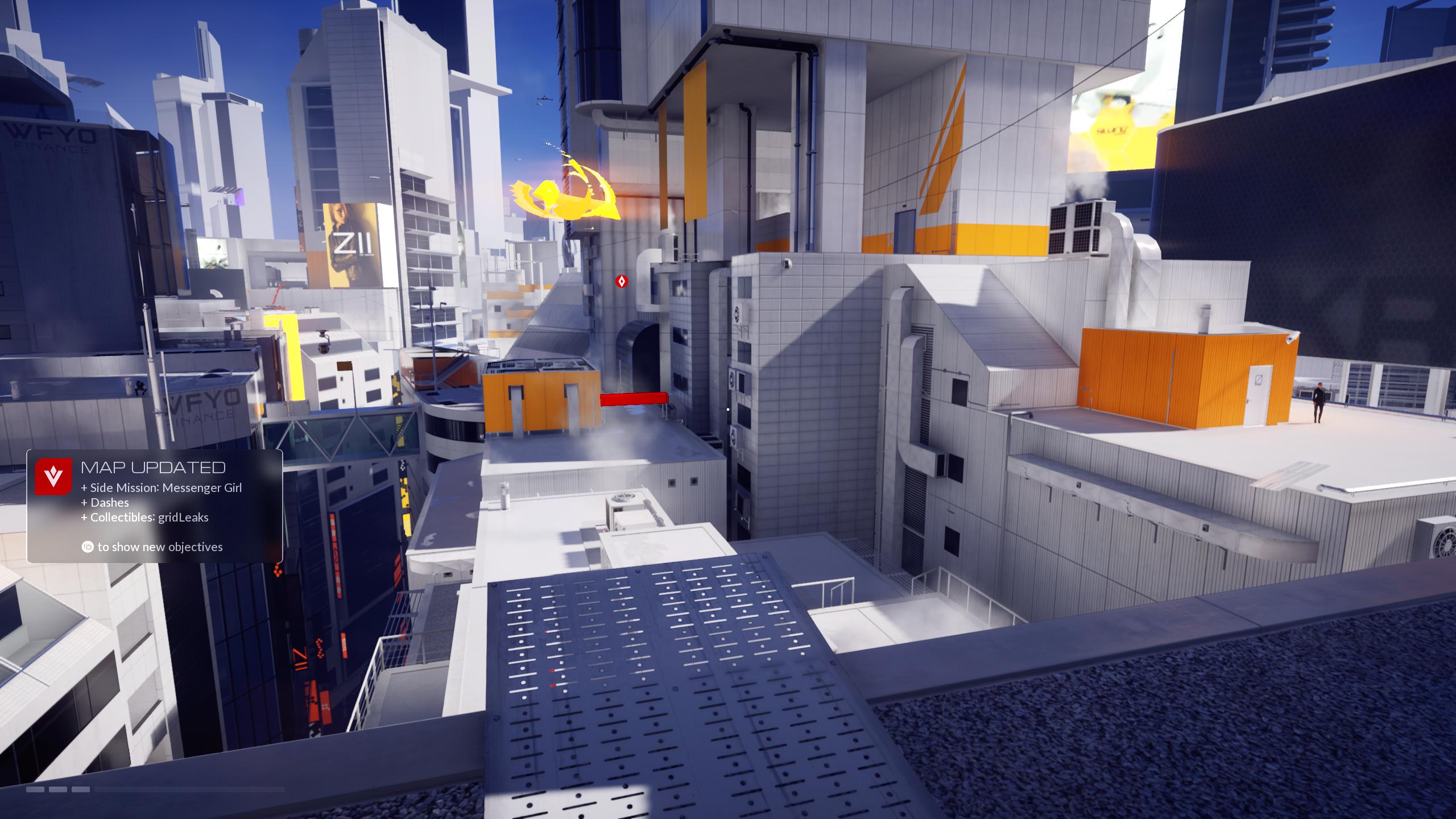
Runner vision is a terrific idea. Like most of Catalyst, however, it can be inconsistent, which can be frustrating. Some missions purposefully turn runner vision off, but other times it would turn off for reasons I couldn’t discern. Too often the pulse would be impossible to spot in the heat of the moment, and it was very easy to wind up running into a dead-end and spending precious seconds frantically spinning to spot a hint of red.
Occasionally the red line will move in a way that’s impossible to follow — it will leap an unleapable chasm, or pass through an solid wall. Whatever feat of programming was required to get the red pulse to trace the dozens of possible routes through Glass, it still has enough quirks to be regularly annoying.
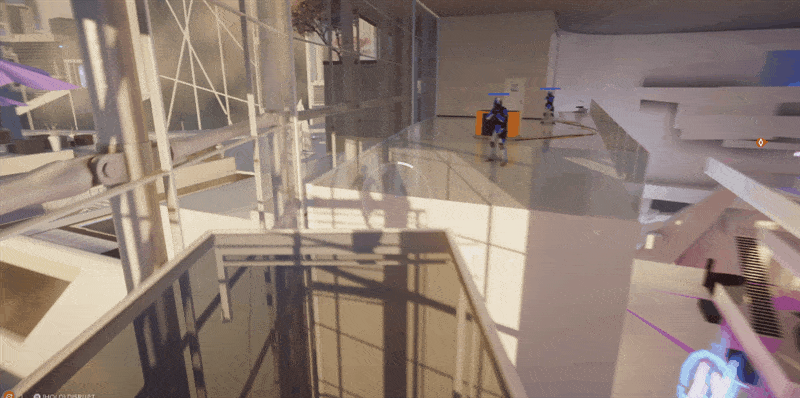
While most of Catalyst is about running away from your enemies, there are times when Faith must stand and fight. She’s a hell of a fighter, too. By the end of the game, I was surprised more enemies didn’t take one look at her and lay down their arms. “Seriously, I don’t even like working here. They are so weird.”
Fighting works better than it did in the first game, and once you’ve unlocked most of Faith’s melee abilities, even the most frantic encounters are a breeze. At one point I rounded a corner to see what was supposed to be an overwhelming number of enemies. Instead of turning tail, I beat the crap out of all of them, only later realising that I was actually supposed to have run away. Enemy AI is hilariously dim, and you can usually take on your foes one at a time while everyone else waits their turn. If you keep moving through encounters, you can build up a “focus shield” that protects you from bullets. (Faith herself never picks up a firearm.)
There’s a learning curve for fighting as well as for fleeing, and my first hour with the game was notably less enjoyable than my last. After practising for that first hour (and after unlocking some of Faith’s basic abilities like a tucked cannonball-jump and a commando roll) I was skipping and wall-running across Glass with abandon. After a few stressful combat encounters I was chaining together takedowns like a Nebuchadnezzar crew member.
Unfortunately, combat sequences tend to get overcrowded. Catalyst‘s combat is best as a fun, momentary diversion in the middle of a frantic flight. Another set of rails and pipes to bypass, these ones conveniently person-shaped. A few battles put you in a closed arena with a larger number of enemies, which becomes a real problem when the bummer “toughest” enemy type wanders in, a big dumb sentinel with endless armour who can be easily spammed with one of the fighting moves you learn early on.
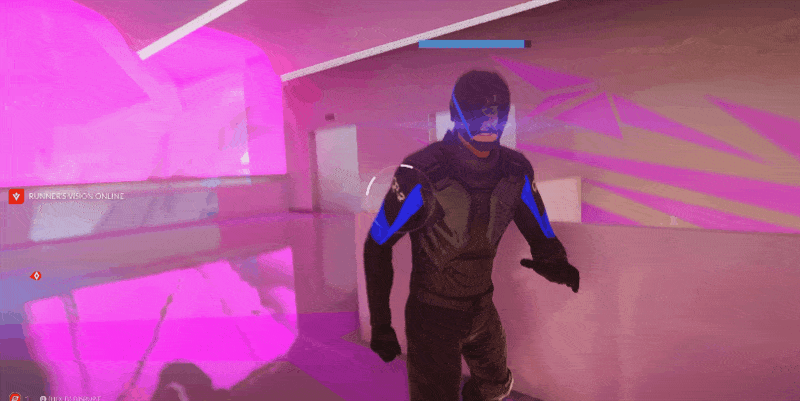
One onerous sequence locks you in an enclosed area and makes you fight wave after wave of dudes. Fail and you have to start all the way over from the beginning. (Like many things in Catalyst, checkpointing is inconsistent. The majority of the time, it works perfectly and spawns you right next to wherever you fell. A few times, you’ll lose huge chunks of progress and audibly groan with each death.) By and large, though, combat in Catalyst is plenty engaging. I’d far rather it be too easy than be too hard.
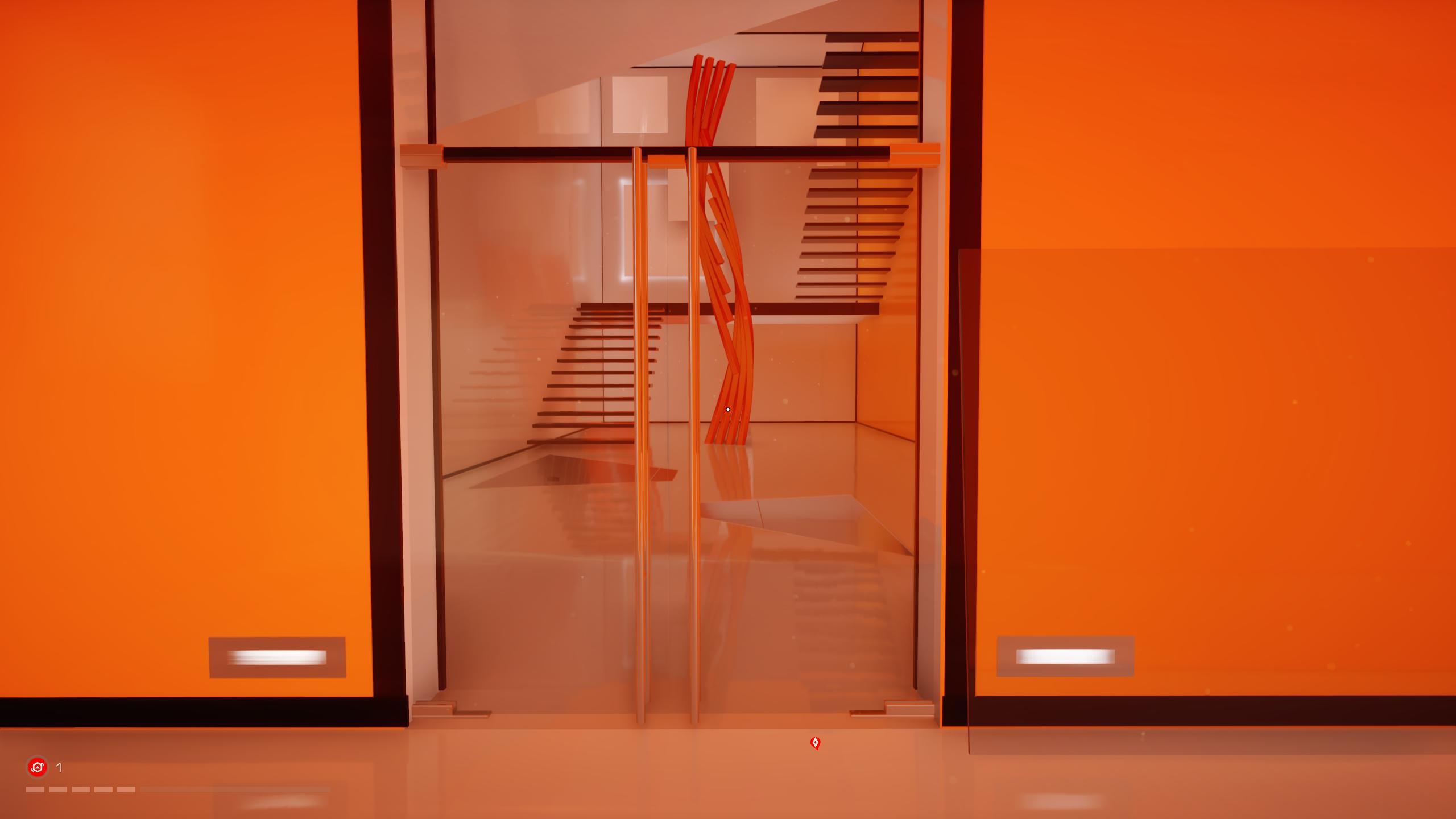
Catalyst‘s aesthetics are crucial to its appeal, as well they should be in a game with a name as perfect as “Mirror’s Edge”. (Seriously, a moment to recognise how good that name is. So many video games have bad names. That name is so good.) A given screenshot of the game throws flashes of searing red against a blinding white city and a clear blue sky.
When viewed at speed, Glass is a striking, beautiful place. Up close, however, the shimmer often fades. NPCs are gauzy, stiffly animated and mostly indistinct. The costumes are dopey and generic. Some environments so heartily embrace minimalism that they’re difficult to read. Several later areas in the game are lined with transparent surfaces that caused my PC’s frame-rate (GTX 980Ti w/ 4Ghz i7) to shuck and jive while also making it difficult to tell what was a wall and what was a doorway.
Those technical rough edges became more and more apparent to me as I got farther into the game. I ran into plentiful instances of EA’s Frostbite engine creaking and groaning — texture pop-in, wonky animations, stuttering cutscenes, flickering textures and substantial frame-rate fluctuations. Could be the latest Nvidia drivers mitigate some of that, but while those issues generally didn’t detract from my overall experience of the game, they were a frequent distraction.

As it turns out, some of the best bits in Catalyst are slower-paced, high-wire platforming, as Faith makes her way around do the top of some extremely tall building or other. Several story missions and one sidequest in particular take Faith up to the highest points in Glass, shimmying and swinging through the spires and pinnacles of various under-construction skyscrapers. Perched on a scaffolding hundreds of metres above the ground, I would often get some very fluttery butterflies in my stomach. Hopefully someone will mod this game to work with VR headsets. Hopefully that same person won’t force me to play it for more than 30 seconds.
I mentioned a sidequest, because of course I did. This is an open-world game, and open-world games need sidequests! In addition to the 15 story missions that make up the main narrative, there are a fair number of optional missions and challenges. Some are dull (“here, deliver this thing!”) or frustrating (“grab all the orbs, you fail if the timer runs out!”), but the best are just as fun as anything in the main story. Glass is also dotted with copious time trials. You can chart your own and challenge your friends to beat your time. It’s as fun as ever to run a race over and over again, experimenting with tiny variations to see if you can shave seconds off your time.
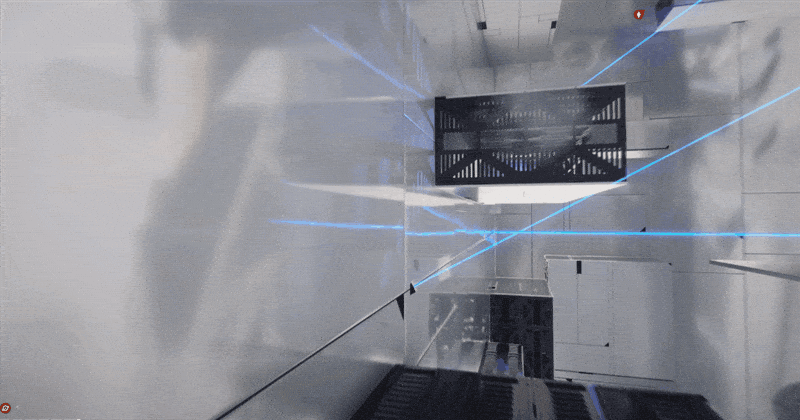
My favourite side challenges, though, have Faith climbing inside of a massive computer server station, scaling to the top while avoiding laser trip-wires. I wish the game had more than a handful of these puzzle rooms.
Catalyst is on the smaller side when compared to most big-budget open-world games. I completed the main story and the most interesting sidequests in around 8-10 hours, though I could’ve spent several more hours mopping up sidequests. The smaller size of the map actually serves the game well. You’ll run through the same areas enough times that you’ll grow familiar with the best routes, which makes traversal much more seamless and enjoyable. Still would have been nice if there’d been a bit more to it all.
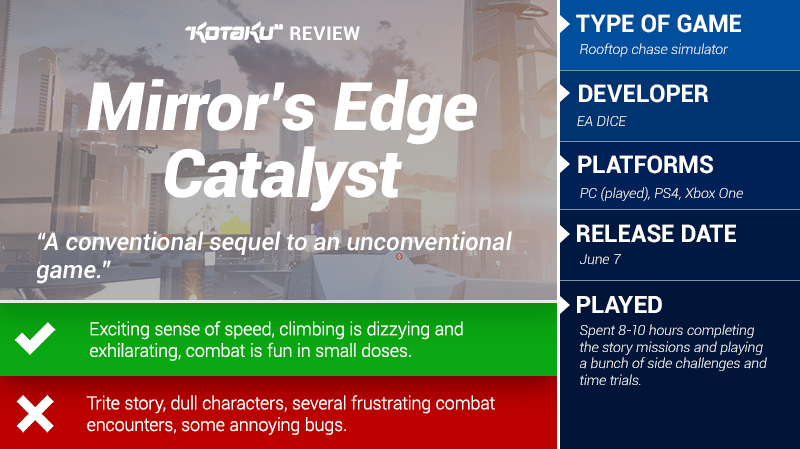
I’m surprised to find myself thinking of Mirror’s Edge Catalyst as a disappointingly safe game, given that I would never have used that word to describe its 2008 predecessor. Yet here in 2016, the new game strikes me as sanded down and conservative. Backstory goes here, sidequests go here, story twist A goes in slot A, story twist B goes in slot B. Upgrade tree C unlocks after story mission E.
The game does many things well, even if those achievements are undercut by a low hum of annoyance that raises in volume with each wonky interface element and grating supporting character. Catalyst is at its fleet-footed best when it barrels forward and sticks to the rooftops, but it never manages to fully shake the cookie-cutter corporate nonsense its rebellious heroes claim to despise.

Comments
10 responses to “Mirror’s Edge Catalyst: The Kotaku Review”
Sounds about right, given what I’ve read.
Still, going to buy it. Mirror’s Edge holds a special fondness for me, and I want more games that innovate movement and combat in First Person.
Seconded. I’d still get it.
forbearer =/= forebear…
But looking forward to collecting my collector’s edition tomorrow!
Hmm, sounds like the original vision got choked out a bit by execs who worried it wouldn’t sell. Still going to pick it up eventually because the first game’s story was also pretty rubbish, combat was OK so long as you didn’t use guns and yet it remains one of the most interesting games I’ve played and I trust the visuals and core movement mechanics will carry some of the first’s magic.
Has anybody else seen that 4chan troll post making the rounds in regards to this game?
This post and the “This week in games” post are basically the only thing I’ve seen about it at all.
I’m still not convinced the game actually exists.
Sold!!!
what else would it have been? mediocrity is EA’s forte.
Played the original for a few hours, couldn’t get into it. This does look pretty though, but it’s a pass for me.
I must disclaim that I haven’t read the full review above, just the synopsis, because I want to experience it for myself.
I wanted to point out though, that both reviews I have read so far seem to say that it’s not very unconventional. I’m not really sure what reviewers were expecting. I played the missions up to and including the first at the Elysium building. I thought it was fantastic, the movement and adrenaline of the encounters and movement were great. If the other big missions are up to the same standard as the Elysium one, I’ll be satisfied.
tl;dr Obviously try it out for yourself.
Edit: After reading a bit more of the above review I feel the review was being too harsh in his assessment of the game. Many of the problems pointed out don’t really seem to be major issues.